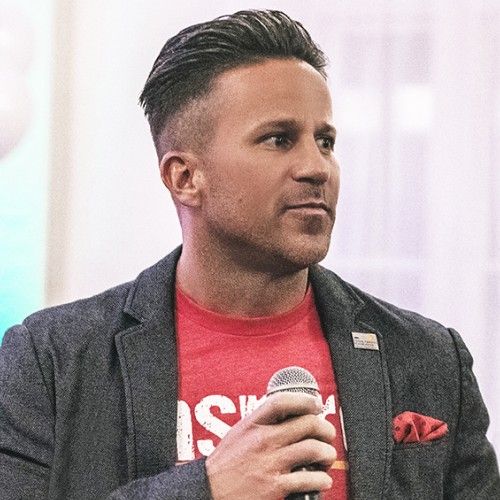Do you ever find yourself or your team in a rut? Maybe this is an often occurrence, or maybe it happens sporadically. How can you maintain team motivation?
Workplace motivation can be broken down into two categories: intrinsic and extrinsic.
Intrinsic motivation is the desire to accomplish goals and develop professionally. Extrinsic motivation involves work factors such as pay and promotions.
Both intrinsic and extrinsic motivation are important ways of driving behavior. When you understand the differences between the two types of motivation, you also gain a better understanding of how to encourage people.
Knowing how to motivate yourself and others is imperative to getting things done and reaching goals. Identifying your internal and external motivators can help you be more efficient, feel more satisfied and achieve growth in your career.
What is intrinsic motivation?
Intrinsic motivation is when you feel inspired or energized to complete a task because it’s personally rewarding. In other words, you're performing the activity because of some internal drive as opposed to an external force or reward.
With intrinsic motivation, the behavior itself becomes the reward.
What is extrinsic motivation?
Extrinsic motivation is when you’re inspired to perform a task either to earn a reward or to avoid punishment. In the case of extrinsic motivation, you're not completing the task because you like it or find it satisfying.
Instead, you're completing it because you think you'll avoid something unpleasant or you'll get something in return.
What are the differences between intrinsic and extrinsic motivation?
The main difference between intrinsic and extrinsic motivation is that intrinsic motivation comes from within and extrinsic motivation comes from outside.
However, the two types of motivation can also differ in their level of effectiveness.
Extrinsic motivation is beneficial in some cases. For example, working toward a reward of some kind can be helpful when you need to complete a task you might normally find unpleasant.
While extrinsic motivation is helpful in certain situations, it may eventually lead to burnout or lose its effectiveness over time. Intrinsic motivation is typically more effective long term for completing tasks and achieving goals in a way that makes you feel fulfilled.
Here are some comparisons between intrinsic and extrinsic motivation:
Intrinsic motivation:
- Cleaning your house because you like it tidy
- Reading a book about a subject that interests you
- Playing trivia because you like the challenge
- From a work perspective, this could be choosing a pay cut to work for a nonprofit you are passionate about
Extrinsic motivation:
- Cleaning your house so your house guests don’t label you as “messy”
- Reading a book because you have to for work
- Playing trivia because you want to win a prize
- From a work perspective, this could be choosing a job because of the pay
How can intrinsic and extrinsic motivation be used effectively in the workplace?
Daniel Pink is a modern writer on business & management, with a strong focus on the changing nature of work and the workplace.
His book published in 2009, “Drive: the Surprising Truth About What Motivates Us,” focuses on the importance and effectiveness of three intrinsic elements to motivation at work: autonomy, mastery and purpose.
Pink argues that the evidence of scientific studies on motivation and rewards suggests that, for any work task that involves more than the most basic cognitive challenge, basic financial reward systems do not work. In fact, they can lead to worse performance.
He accepts that money is a motivator at work, but once people perceive that they are paid fairly, then they become much more motivated by intrinsic elements. Once people are paid fairly, they look for more from their work.
This is why Pink concludes that autonomy, mastery and purpose are the most influential aspects of motivation.
Autonomy
According to Pink, autonomy is the desire to direct our own lives. Pink argues that allowing employees autonomy runs counter to the traditional view of management which wants employees to "comply" with what is required of them.
However, if managers want employees to be more engaged in what they are doing (and they should - as tasks become more complicated) then allowing employees autonomy (self-direction) is better.
For example, some firms allow employees to have time at the workplace to do whatever they want. This freedom to spend time doing their own thing leads to many more innovative ideas and solutions.
The growth of flexible working practices is another good example of allowing staff more autonomy.
Mastery
Pink argues that humans love to "get better at stuff" - they enjoy the satisfaction from personal achievement and progress. Allowing employees to enjoy a sense of progress at work contributes to their inner drive.
By contrast, a lack of opportunity at work for self-improvement or personal and professional development is liable to make employees more bored and unmotivated.
A key implication for managers is to set tasks for employees that are neither too easy or excessively challenging. Pink calls such tasks "Goldilocks tasks,” otherwise known as tasks that are not "too hot or too cold.”
Purpose
Pink describes purpose as the desire to do things in service of something larger than ourselves. He also argues that people intrinsically want to do things that matter.
For example, entrepreneurs are often intrinsically motivated to "make a difference" rather than simply aiming for profit maximization.
Most of us spend more than half our waking hours at work. We want that time to matter.
In addition, employees need to know and understand the mission and goals of the organization and appreciate how their work and role fits into what the organization is about.
Intrinsic motivation
You can apply intrinsic motivation in several ways at work. Providing and receiving positive feedback is often an effective way to increase motivation.
If you're interested in fostering intrinsic motivation among your team, consider the following:
● For managers: To support intrinsic motivation among your team, be intentional with your feedback. Constructive criticism can help your team understand your standards and expectations while working together to achieve a goal or complete objectives effectively. Be sure you're not giving an abundance of praise for work that's not meaningful to your team. AIM Insights is a tool managers can use to help them give intentional feedback and ask intentional questions.
● For employees: As an employee, you should consistently tell managers when and how their feedback helps you to be motivated. Consider positive feedback when their guidance was particularly helpful, which can help intrinsically motivate them to continue managing you successfully because they feel satisfied about the positive effect of their efforts.
Extrinsic motivation
In some settings, extrinsic motivation is necessary for day-to-day work. Extrinsic rewards like bonuses, commissions, or prizes may be the preferred way to promote interest in certain difficult or unfulfilling tasks.
To successfully use extrinsic motivation, consider the following:
● For managers: When you want to use extrinsic motivation as a manager, it's important to offer rewards strategically. While external rewards can effectively motivate your team to take on a new challenge, learn a new skill, or hit a quarterly goal, you should also make sure you're giving them the resources necessary to take on projects and skills they're passionate about.
● For employees: Work for the rewards that please you, but be aware of your limits and take breaks when you need them. Reflect on what is motivating you and notify your manager about any lack of resources or misdirection that impedes the proper motivation, and therefore, reward.




































































